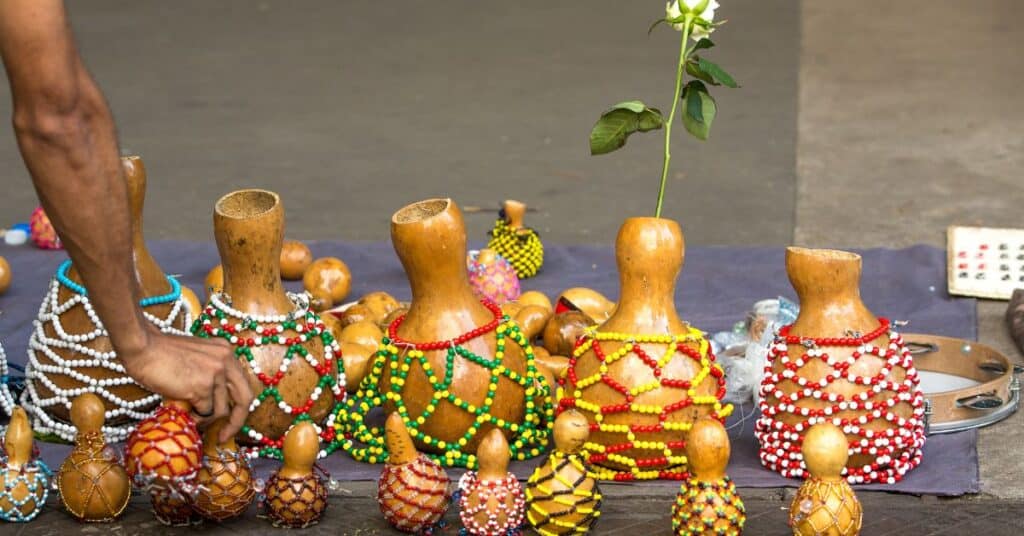The afoxê is an external seed clack idiophone of Brazil, by and large solidly associated with the Afro-Brazilian culture of the Bahia locale.
The fundamental standard setting of usage of the afoxê in Bahia is for street marches similarly called afoxê, in which the music of the candomblé severe group is brought into a typical setting during Carnaval.
The afoxê, both in its standard and modernized plan, is furthermore used as a partner percussion instrument by Brazilian notable music skilled workers,
in Latin American dance gatherings, and, even more lately, in the Western show passage and the world music scene.
The afoxé is an Afro Brazilian instrument made from a gourd (cabaça) encompassed by a net in which globules or minimal plastic balls are hung.
The instrument is shaken to cause its melodic disturbance.
There is another instruments that is like afoxe,it is called shekere. The shekere (from Yoruba Ṣẹ̀kẹ̀rẹ̀) is a West African percussion instrument involving a dried gourd with spots or cowries woven into a net covering the gourd.
The Shekere was begun in a faction in Nigeria called the Yoruba clan.
The instrument is typical in West African and Latin American folkloric customs as well as a piece of the popular music styles. In execution it is shaken or possibly hit against the hands.
The shekere is created utilizing plant gourds that foster on the ground. The condition of the gourd selecting the instrument.
The gourd must be dried for a very long period before the seeds and pulp are removed to create a shekere. Competent globule work is changed it up after it has been cleansed.
Afoxé and traditional xequerê are gourds, thus since they are made of a distinctive material, they occur in a variety of sizes and forms.
Specific types and sizes of these instruments are needed for certain musical genres. The characteristic feature of afoxés that is most frequently noticed is a spherical gourd that resembles a handle.
They are covered with plastic dots that are connected by string or string. Shekereese tend to be bigger and sound more grounded, especially in the bass tone produced when the hand’s focus point is extended to the gourd’s longest side.
Different gourds produced now have hardwood handles and few metal accents and sound very different from the original. Despite this, a few Brazilian musical traditions have deliberately integrated this cutting-edge form of instrument.
As there numerous groups in which gourds may be found, there are as many different ways to find them.
One method would be for the left hand to hold the globules and turn the gourd with the right hand holding the handle, causing the globules to grind against the gourd’s body.
When the gourd is twisted, the specks slide, creating accents and rhythms. Another technique involves shaking the gourd and striking the instrument’s body with your hand’s centre to produce tones.
Holding the gourd straight while shaking it all around while making short, high notes yields a third solid.
While holding the touches, the left hand secures their scouring against the gourd’s body. As the gourd is twisted, the dabs slide, creating accents and rhythms.
Another technique involves shaking the gourd and striking the instrument’s body with your hand’s centre to produce tones.
By holding the gourd upright and shaking it all around while playing short, high notes, a third strong is obtained.
The globules are held in the left hand, which causes them to scour against the gourd’s body.
Accents and rhythms are created by the sliding of the globules when the gourd is twisted. Another technique involves shaking the gourd and striking the instrument’s body with your hand’s centre to produce tones. By holding the gourd upright and shaking it back and forth while playing short, high notes, a third strong is obtained.

